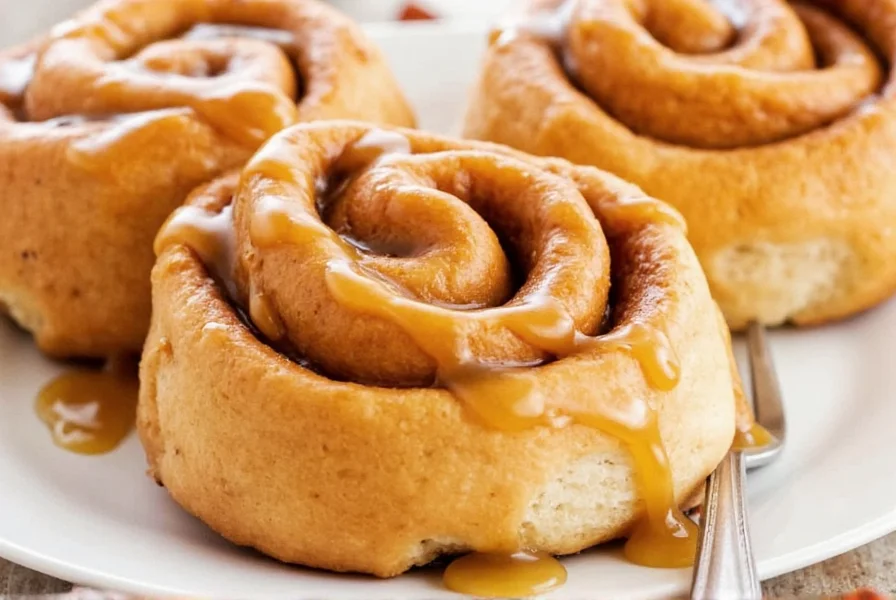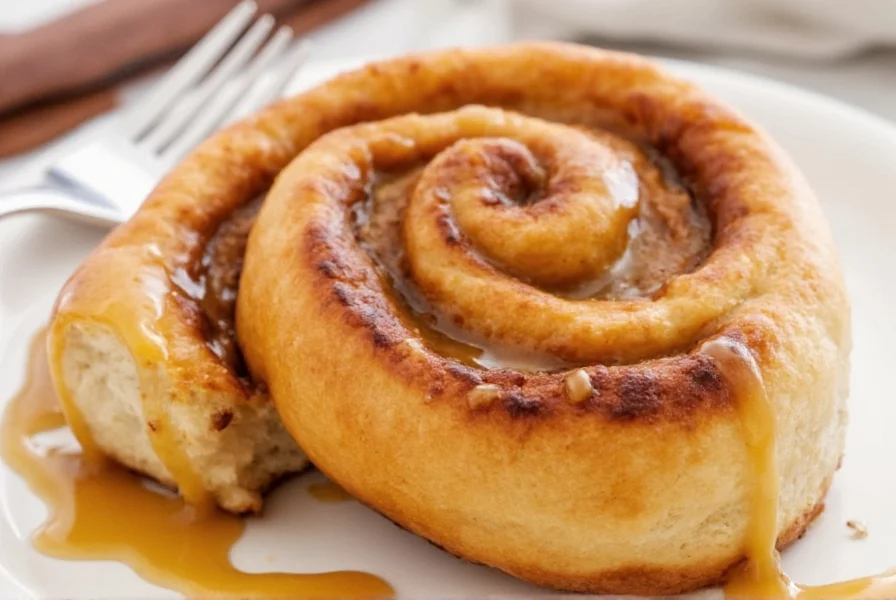There's something magical about the combination of warm spices and sweet caramel that makes caramel cinnamon rolls irresistible. Whether you're baking for a holiday brunch, weekend treat, or special celebration, mastering this elevated version of the classic pastry requires understanding both the dough fundamentals and the caramel integration techniques that set it apart.
The Essential Components of Perfect Caramel Cinnamon Rolls
Creating exceptional caramel cinnamon rolls involves three critical elements: the dough, the cinnamon filling, and the caramel component. Each element must be executed properly to achieve that perfect balance of texture and flavor that defines outstanding caramel cinnamon rolls.
Yeast Dough Fundamentals
The foundation of any great cinnamon roll is a properly prepared yeast dough. For caramel cinnamon rolls specifically, you want a slightly enriched dough that can support the additional moisture from the caramel without becoming soggy. The ideal dough should be:
- Soft and slightly sweet (but not overly sweet, as the caramel provides ample sweetness)
- Enriched with butter and egg for tenderness
- Properly proofed to achieve maximum fluffiness
- Rollable to an even ¼-inch thickness
Many home bakers make the mistake of using a dough that's too dense, which can't properly absorb the caramel without becoming heavy. The secret to light, airy caramel cinnamon rolls is allowing proper rise time—both for the initial dough fermentation and the final proof after rolling and cutting.

Incorporating the Caramel Element
What truly distinguishes caramel cinnamon rolls from their traditional counterparts is how the caramel is integrated. There are three primary methods, each producing slightly different results:
| Caramel Method | Texture Result | Best For |
|---|---|---|
| Caramel swirled in filling | Evenly distributed caramel pockets | Those who want caramel throughout each bite |
| Caramel poured in pan before baking | Classic sticky bun texture with caramel bottom | Traditionalists who love the caramel-soaked bottom layer |
| Caramel drizzle after baking | Surface caramel with contrast to soft roll | Those who want distinct caramel flavor on top |
The Filling Formula That Makes All the Difference
While traditional cinnamon rolls use a simple cinnamon-sugar mixture, the best caramel cinnamon rolls benefit from an enhanced filling that complements the caramel element. The ideal filling includes:
- Brown sugar (light or dark depending on desired caramel intensity)
- Ground cinnamon (freshly ground provides superior flavor)
- A small amount of cornstarch or flour to prevent excessive dripping
- Finely chopped pecans or walnuts (optional but recommended)
- 1-2 tablespoons of your prepared caramel sauce
When spreading the filling, leave a small border along one long edge of the dough rectangle to help seal the roll properly. The addition of a small amount of caramel directly in the filling creates flavor continuity between the roll and the caramel component, preventing a jarring transition between elements.
Step-by-Step Guide to Making Caramel Cinnamon Rolls
Follow these professional techniques to achieve bakery-quality caramel cinnamon rolls at home:
Preparing the Dough
- Warm milk to 110°F (43°C) and dissolve yeast and a pinch of sugar. Let sit for 5-10 minutes until foamy.
- Mix flour, remaining sugar, salt, and melted butter with the yeast mixture.
- Add eggs and knead until smooth and elastic (about 8-10 minutes by hand or 5-7 minutes with dough hook).
- Place in greased bowl, cover, and let rise until doubled (1-1.5 hours).
Creating the Caramel Component
For the best results, make a small batch of homemade caramel sauce rather than using store-bought:
- Melt ½ cup butter and 1 cup brown sugar in a saucepan over medium heat.
- Add ¼ cup heavy cream and 2 tablespoons corn syrup, stirring constantly.
- Cook for 3-4 minutes until slightly thickened.
- Remove from heat and stir in 1 teaspoon vanilla extract.
- Cool slightly before using in filling or as a topping.
Assembling and Baking
- Roll risen dough into a 16x20 inch rectangle.
- Spread softened butter evenly over dough, then sprinkle cinnamon-sugar filling.
- Drizzle 2-3 tablespoons of cooled caramel sauce over the filling.
- Roll tightly from the long side, pinch seam to seal, and cut into 12 equal pieces.
- Place rolls in greased baking dish (optionally pour remaining caramel in bottom of dish first).
- Let rise 30-45 minutes until puffy.
- Bake at 350°F (175°C) for 22-28 minutes until golden brown.
- Immediately invert onto serving platter if caramel was placed in bottom of pan.
Proven Tips for Perfect Caramel Cinnamon Rolls Every Time
Professional bakers rely on these techniques to ensure consistent results:
- Temperature control: Keep ingredients at room temperature for proper dough development.
- Caramel consistency: Your caramel should be pourable but not runny—if too thin, simmer 1-2 minutes longer; if too thick, add cream 1 teaspoon at a time.
- Cutting technique: Use unflavored dental floss or a sharp serrated knife for clean cuts without squishing the rolls.
- Baking temperature: Start at 375°F (190°C) for 10 minutes, then reduce to 350°F (175°C) to prevent over-browning while ensuring thorough cooking.
- Resting time: Let rolls rest 5-10 minutes after baking before adding additional caramel topping to prevent excessive absorption.
Variations to Try
Once you've mastered the basic recipe, experiment with these delicious variations:
- Sea salt caramel: Sprinkle flaky sea salt on top of the warm rolls for a sweet-salty contrast.
- Apple caramel: Add finely diced cooked apples to the filling for a fall-inspired version.
- Bourbon caramel: Stir 1-2 tablespoons of bourbon into the caramel sauce for depth of flavor.
- Maple caramel: Substitute maple syrup for some of the brown sugar in the caramel.
- Gluten-free: Use a quality gluten-free flour blend and add 1 teaspoon xanthan gum.
Storing and Reheating Instructions
Proper storage maintains the quality of your caramel cinnamon rolls:
- Room temperature: Store in an airtight container for up to 2 days (the caramel may soften the rolls over time)
- Refrigerator: Keep for up to 5 days—reheat before serving
- Freezer: Freeze unbaked rolls or baked rolls for up to 3 months
For best reheating results, place rolls on a microwave-safe plate and cover with a damp paper towel. Microwave for 15-20 seconds, or warm in a 300°F (150°C) oven for 8-10 minutes. Adding a small pat of butter before reheating restores moisture and enhances flavor.











 浙公网安备
33010002000092号
浙公网安备
33010002000092号 浙B2-20120091-4
浙B2-20120091-4